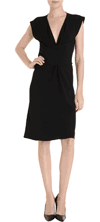Textiles, Merchandising and Fashion Design, Department of

Department of Textiles, Merchandising and Fashion Design: Dissertations, Theses, and Student Research
First Advisor
Claire Nicholas
Third Advisor
Peter Capuano
Date of this Version
3-2019
Document Type
Thesis
Abstract
Our understanding of the Victorian woman has long centered around the idea of the “Angel in the House,” made famous by Coventry Patmore’s 1854 poem. This mythical ideal to which a middle-class woman should endeavor can be found in endless numbers of nineteenth-century texts and has become an oft-referenced concept in modern historiography. Representations of the attributes of the ideal woman circulated widely in society, pictured in etiquette books, medical journals, and especially advertisements. They were an ever-present reminder to women of the social norms governing their roles and life trajectories. As consumers, women were responsible for the presentation of themselves and their family, and the purchases they made reflected their adherence to these societal rules. In following fashion they walked a thin line between expectations and excess. While existing scholarship addresses discourse and representations of the ideal woman trope, explorations of how actual nineteenth-century women navigated these norms are lacking. Women’s writings and thoughts are often left unpublished and lost to history. However, that does not mean that they had no voice or power. This thesis addresses the issues of stereotyping and submission that often surround our understanding of women in the nineteenth century by examining the material and documentary evidence they left behind. In addition to the published prescriptive literature, research into the extensive personal documents of Sarah Bradlee Codman provides an opportunity to see how the social framework that surrounding one woman manifested in everyday life. Additionally, artifact analysis and reconstruction of a surviving pair of Codman’s boots will critically examine how an object can inform our understanding of historical discourse. This project illuminates the experience of women in the nineteenth century and foregrounds their voices in relation to fashionable objects.
Advisor: Claire Nicholas
Included in
Cultural History Commons, Fashion Design Commons, Fiber, Textile, and Weaving Arts Commons, Women's History Commons, Women's Studies Commons


Comments
A THESIS Presented to the Faculty of The Graduate College at the University of Nebraska In Partial Fulfillment of Requirements For the Degree of Master of Arts, Major: Textiles, Merchandising, & Fashion Design, Under the Supervision of Professor Claire Nicholas. Lincoln, Nebraska: March, 2019.
Copyright (c) 2019 Nicole Rudolph